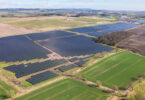Earth Day is on the horizon, and it’s one of the most popular times to think about environmental issues. Many people will be reflecting on how our behaviour impacts the world around us and strive to make some changes to their everyday habits so that they can lead more eco-friendly lives.
That’s why recycling expert Ian Cowley, Managing Director and founder of Cartridge Save, has compiled a list of surprising ways in which you might be harming the planet without knowing.
Fortunately, he has also provided solutions for those aiming to be more environmentally conscious. These changes are likely to take minimal effort which could be outweighed by their potentially significant benefits on the environment.
Earth Day is the perfect moment to consider implementing even just one or two of the following lifestyle modifications and committing to leading greener futures.
Eating meat with every meal
Eating meat is bad for the environment for several reasons. One of these is that it creates over half of the greenhouse gas emissions caused by the food production industry – and according to the UN Food and Agricultural Organisation, farming livestock is responsible for 14.5% of all greenhouse gas emissions.
Eating meat with every meal is one of the most damaging things you can do for the planet, and the less meat you eat, the lower your carbon footprint is likely to be.
If you eat meat for every lunch and dinner meal, try cutting back to just once a day; better yet, implement meat-free days – many people have ‘Meatless Mondays’.
You can easily incorporate more plant-based foods into your diet, such as meat substitutes and other protein sources like lentils, beans and pulses.
If you are insistent on eating meat, some choices are better for the environment than others. When it comes to choosing meats, poultry is also a more eco-friendly option than beef and other red meats.
Not composting food leftovers
According to Business Waste, 97% of people in the UK do not compost. This is bad news for the planet, as composting is great for the environment – putting plant-based leftovers on a compost heap breaks organic materials down instead of sending them to landfills and adding to piles of waste.
The process leaves nutrient-rich soil that is far better for the Earth. There are tons of tips and tricks online to start your own home compost, and the activity requires little more than some space in your garden.
If you have garden space, try creating an area with a mixture of brown organic waste, such as dry leaves and twigs, and green waste, such as grass and chopped vegetable scraps, keeping it moist and turning your heap regularly.
Recycling dirty items
A classic error many people make when recycling is recycling dirty items. This is bad as it contaminates the recycling process and can make sorting through recyclables hard.
In worst-case scenarios, this can lead to the entire batch of materials being rejected, however there is a quick fix, as most plastic, glass and metal recyclables can be rinsed or washed more thoroughly if necessary.
For the best results, wash your food packaging as soon as you use it and don’t wait for the residue to dry up. If it’s something like cardboard where food residue or oil stains cannot easily be removed – or if you simply don’t have time to clean off thick, dried-up dirt – bin it instead, as one item could negatively impact your entire recycling output.
Using ‘recyclable’ plastics
It’s better to recycle your firm plastics than to bin them, but most plastic does not end up being recycled.
An OECD study revealed that only 9% of plastic is recycled globally, and Greenpeace UK recently reported that only 17% of 90 billion plastic pieces are recycled annually.
Recycling plastic can be time-consuming, expensive and energy-intensive, and many plastics can only be recycled once as the material becomes defective.
While it’s almost impossible to eliminate plastic entirely, it’s best not to become complacent about consumption under the false assumption that recycling plastic offsets its harm.
You can try to limit your usage as much as you can by choosing paper, cardboard, metal or glass packaging where possible. Additionally, plastics can often be reused and repurposed, and it’s a good idea to do this as much as possible before they’re disposed of.
Leaving appliances on
Leaving appliances and utilities turned on while not in use needlessly wastes energy – and, of course, increases your electricity bill.
To combat this, try to make a habit of turning off your appliances at the switch or even unplugging them altogether.
Many people already remember to turn lights off when leaving a room, so this habit can be easily modified to incorporate checking appliances. This is especially beneficial with appliances that are not in use most of the time, such as hair styling tools.
Running small dishwasher loads
Running small, regular dishwasher loads is inefficient and cost ineffective as they require the same amount of energy and water as full loads.
People who live alone may end up running small, daily dishwasher loads and not getting the most out of each cycle. Instead, run less frequent, larger loads and wash up anything dirty that you need to use again immediately.
This will likely save time in the long run and is far more eco-friendly. If your dishwasher has a half-load setting, this is also a good alternative as this type of cycle is shorter and uses less water and energy.
The same logic applies to other utilities, like washing machines and tumble dryers – but also avoid overfilling and be sure to follow the manufacturer’s instructions.
Doing hot laundry washes
For clothes that are only slightly dirty from wear, washing at 30 degrees Celsius is usually hot enough – and it’s much more eco-friendly.
According to Persil, cold washes are also better for the health of your clothes, particularly bright and dark colours, jeans, and delicate fabrics like wool and silk. Despite this, many people believe they need to clean their clothes at 40 or even 60 degrees.
Luckily, if you’re not washing towels, bedding or very dirty or soiled items that require heavy-duty cleaning, you probably only need a 30-degree wash. This is one of the easiest and low-maintenance things you can do to help the environment.
Buying synthetic clothing
Most people know that synthetic clothing – such as those made of polyester, nylon and Lycra – is bad for the environment.
This is because these fabrics are derived from non-renewable resources that undergo production processes that release greenhouse gas emissions. Furthermore, they don’t biodegrade like natural fibres do.
Contrary to popular belief, buying second-hand synthetic garments still negatively harms the environment as washing synthetic clothes releases microplastics into the water, which can potentially harm ocean life.
Wherever possible, only buy synthetic items that you will rarely wash, such as coats, and opt for natural fibres like linen, wool and silk as much as you’re able to. Organic variants of these fabrics, such as organic cotton, are even better, as they are produced in a more sustainable way.







